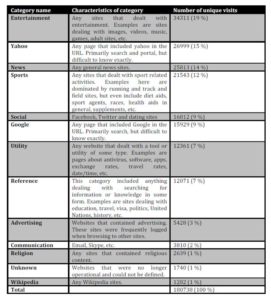Introduction
ICT-tools may act as a catalyst for development because they create increased life opportunities and have an impact on poverty reduction. This study takes place in Kenya, which has a strong tradition of mobile technology. Kenya is ranked 147th of 187 countries and belongs to the group of countries with “low human development” (UNDP, 2014). Despite this fact, Kenya is a leader in mobile technology and is considered an ICT-hub in Africa. For example, a series of innovations have emerged from Kenya, not least the digital payment and bank transfer system m-pesa. Additionally, mobile subscriptions are high (32.8 million) in Kenya and 23 million inhabitants use a mobile Internet data subscription, which is 57 % of the total population (Communications Commission of Kenya, 2016). Nevertheless, the predominant user is young, male, relatively wealthy, and well-educated compared to the population as a whole (Bowen, 2010). However, a recent report from ITU (2013) indicates that 18.5 % of young people between the ages of 15-24 in Kenya use ICT daily. Yet, many Kenyans have limited access to electricity and high-speed connectivity for Internet access. Likewise, technical barriers appeared in a survey of mobile learning in Botswana to educate 19 physician trainees in medicine. They were provided with smartphones and pre-loaded applications to support decision-making, but the challenge was downloading applications due to the bandwidth limitations of mobile broadband. However, even when there was access to good bandwidth, there were still high costs for Internet access that remained as a barrier for mobile learning.
Thus, given the expansion, popularity and decreased prices of smartphones, it is interesting to understand its everyday usage and impact on people’s lives. Mobile technologies such as smartphones have the potential to support learning and create solutions for real life problems. In this study we explored young Kenyan adults from urban slums, who strove to have running as their profession, and their use of smartphones for a period of one year. We investigated what was important for the participants and their use of mobile technology to meet those needs. Our interest was also to identify immediate changes in behavior and practices through the use of smartphones. The research purpose was to analyze how a group of Kenyan runners used their smartphones in everyday life to improve learning opportunities, running performance, and social interactions. The specific research question was: What new activities do the smartphones create in the participants’ daily lives?
Previous work
There are not yet many research studies of the daily usage of mobile phones in informal environments in developing countries. Moreover, most studies showing the use of mobile phones as a learning tool took place before the expansion of smartphones. However, a study in India showed that adolescents’ usage of mobile Internet was mainly in the area of entertainment. Games, videos, music, Bollywood teasers, etc., attracted the youth, and the researchers pointed out that what began as entertainment led to more serious activities and educational programs (Rangaswamy and Cutrell, 2012). Thus, mobile technology is well worth studying in the Kenyan context, both to find similarities and to explore the potential a smartphone has for existing practices and for further educational training. Secondary schools in Kenya are costly and many pupils drop out of school at an early age. As in many other countries, if you do not finish secondary school it is difficult to find employment. In Kenya, a formal diploma is a must to gain access to employment in the public sector, police force, or the military. Mobile phones, especially smartphones, can have a place to expand formal learning into informal environments with real-life use of mobile learning.
However, in most formal school environments, in Kenya as in other countries, mobile phones are forbidden during school hours. In fact, mobile phones are seen as disruptive tools. For example, in higher education mobile phones are more widely used. University students use mobile devices in their courses and find them easy to access when needed, and researchers point out that mobile phones are a potential tool for learning (Kenny et al., 2009). The potential for mobile learning is high (Traxler, 2009), even though the students did not have time to fully learn the mobile technology during the university course and were less familiar with the smartphone because it was not their own device. Nonetheless, formal learning practices tend to be inherently more conservative than informal, everyday practices “because of the way they are enmeshed in chains of action and commonalities of purpose.” (Merchant, 2012, p. 772). On the other hand, informal practices rather tend to be driven by individual preferences and needs. An example of such findings was the study of Balasubramanian et al. (2010). They studied 73 illiterate and semi-illiterate women in India, and found that the women were assisted in their learning process through the use of mobile phones. The women carried their phones when they took their goats for grazing and received three to five voicemails or audio messages per day, which they shared with others. 82 % of the women found the learning more useful than face-to-face training. The reason was that the women learned as they moved, but they also lacked time to attend classroom training. Thus, the mobile phones supported learners to learn at their own time and pace (Balasubramanian et al., 2010).
Mobile phones are widely used in Kenya and are an increasingly common way to access the Internet (Jensen, 2012),which creates major implications for learning and knowledge. It seems that access to the Internet is supplanting the PC with the smartphone, and this creates opportunities to use mobile devices in educational environments. However, the lack of knowledge about the World Wide Web is a crucial aspect. Half of the non-users of the web did not know how to use it, and one third of the adults in Bowen’s (2010) survey in Kenya claimed they did not know what the web was. Otherwise the main source for news and information was the radio for the Kenyan inhabitants, but word of mouth also played a major role for information gathering (Bowen, 2010). Of course literacy levels were important to understand content but language skills were also necessary. The two official languages, English and Kiswahili, were keys to newspapers, web use, SMS service, etc.
Mobile technology provides learners with multiple ways to interact with content and with others. Hence, incorporation of mobile phones in one’s social life is a central concern and Shrum et al. (2011) surveyed in Kenya in 2002 and 2007 the impact of mobile phones on social networks. Target groups were owners of small enterprises and professionals (teachers, lecturers, lawyers and administrators), and results showed that email did not account for social change because many of their friends or neighbors were not connected. However, the relative stability of ties with friends was important and the mobile phones mostly enhanced the weak ties of the participants’ social networks. Horst & Miller (2005) had similar findings with a traditional anthropological study in Jamaica by living with families for one year. The researchers’ aims were to assess the impact of mobile phones in low-income families and to understand the local incorporation of an ICT-tool. The findings indicated an increased local network and income by social networking, but the participants also searched for sexual relationships with their mobile phones. Thus, the mobile phone seemed to be important for the user and increased collaboration and provided ways to be included in social networks. The study showed through the use of smartphones how learning processes emerged in informal and non-formal environments and offered a means for accelerating the learning process, if the technology was placed in an appropriate social context. Thus, mobile learning was learning in context and continuity between contexts required communication (Jones et al., 2006).
Methodology
The study design was an intervention study with a participatory action research (PAR) approach. The idea behind PAR is to create knowledge and empower social impact for marginalized people (Simonson and Bushaw, 1993), which in this study were the poor in Kenya. The participants were not only sources of data; they also affected the research design. Thus, it was a learner-based approach built on active collaboration between the researchers and participants throughout the whole research process, including final discussions and actions implications (Whyte, 1991). The participants’ strong interest for learning new skills influenced the process. During the fieldwork and the process, focus changed over time and the escalation of insights changed the general research plan, and introduced new ideas to the project and new parts to study. It is difficult to know to what extent the participants were empowered by the research process (Simonson and Bushaw, 1993), although new ideas arose during discussions/workshops (five visits to Nairobi during the project) with researchers and participants and evaluations with the participants. Initially, the researchers assisted with the basics of smartphone usage and suggested different applications or use of multimedia functions. However, inspiration and guidance for other applications or web sites came from peer collaboration. Thus, in summary, modifications were linked to the research process, and some of the changes explicitly occurred from the research process. Therefore, for the action part in PAR, a smartphone can have a significant value to create knowledge and act as a powerful and flexible resource for different activities to affect social change in a community.
Research setting and participants
As previously mentioned, technology can be one tool for poverty reduction and sport can be an additional one to create development. The participants in this research, therefore, consisted of Kenyan runners. The runners participated to create alternatives for income and learning opportunities outside of running or once their careers were over. They were from the slum of Kibera in Nairobi (East Africa’s largest slum) and from Ngong (20 km outside of Nairobi). Two target groups were purposely selected. These groups consisted of Kenyan runners from poor backgrounds with no or limited income and education. A majority of the runners had only completed primary school education, a few had completed secondary school education, and only one participant had a university degree. In total, there were 30 runners (21 men and 9 women) from 19 to 34 years old. The runners were considered to be semi-elite (in terms of racing results just below the elite), elite on the national level, or world-class elite (competing in international races). The vast majority of the participants concentrated on marathon running (because there is a lot of money to be made in such races) and trained 2-3 times per day/6 days a week to realize their potential and fulfill their goals.
Smartphones
The participants had no previous experiences of using smartphones, but all of them had a simple mobile phone. The 30 Kenyan runners were provided with a basic (US $ 80 cost) Android smartphone (Huawei Ideos) and free Internet time (1.5 GB traffic/month) during the one-year project (Nov. 2011 to Nov. 2012). The research institutions paid for the smartphones and Internet time for the duration of the project year. The Internet time (data bundles) was distributed on a monthly basis to the participants. After thorough discussions and signing an informed consent letter, the participants agreed to allow an Android application called Phonebeagle to log all their mobile phone usage. 29 of the 30 smartphones were tracked, and all aspects of the runners’ actions were recorded by a locally installed application and sent to servers when a data connection was available. The Phonebeagle application recorded all activities but due to a variety of technical issues, all activity was not successfully logged for the entire year. However, the tracking of 20 smartphones was successful for 8-12 months, 6 smartphones were tracked for 4-7 months, and 3 smartphones 1-3 months of the entire period. The participants chose how and when to use their smartphones. The participants were encouraged to use it according to their own interests and to use the functions of the smartphones that supported their training.
Analysis
To guide the analysis of the mobile log data, Koole’s (2009) Framework or the Rational Analysis of Mobile Education (FRAME) was used. The FRAME-model intends to analyze the interconnection between a mobile device, a learner and social aspects, thus taking a sociocultural perspective of learning. Learning is considered to be a social process and interaction with technology may change how the learner acquires information, knowledge, and skills. This research study was intended to be a specific example of interactions between mobile technology and people, thus an empirical test of Koole’s (2009) model. Koole (2009) describes mobile learning as consisting of three equal components with an integration of mobile technology, learning capacity and social interaction. The model is illustrated with the three primary components represented by device characteristics (D), learner (L) and social aspects (S) of learning and their intersections (Figure 1).
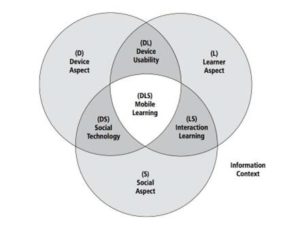
Figure 1: The Frame Model. Koole (2009, p. 27)
The device aspect (D) refers to the physical characteristics of the hardware such as size, weight, touchscreen, and storage as well as the usability of the software. The learner aspect (L) describes how learners use previous understanding, and how they develop skills and concepts. The social aspect (S) addresses communication, cooperation, and interaction. These three aspects overlap each other and create the three intersects of device usability (DL), interaction learning (LS), and social technology (DS). The device usability (DL) intersect consists of both the device and learner aspects. This intersect combines the physical characteristics of the mobile device with a learner’s mobility, access to information on the move, and comfort, which are all significant for usability. The social technology (DS) intersect describes information exchange and communication collaboration between multiple users of a mobile device. This intersect also considers the connectivity of a system (e.g. WiFi and Bluetooth) and collaborative tools. The interaction learning (LS) intersect refers to individual, collaborative, and sociocultural learning. Ideal mobile learning is a convergence of all the aforementioned aspects. Additionally, Looi et al. (2010, p. 160) claim that “…different cognitive learning processes take place individually, in the group and through operating on artefacts mediated by technology.”
Our main interest in this study was to investigate experiences of interaction and mediation through technology and therefore the focus was on the intersections (DL, DS, and LS) of mobile learning (DLS). Thus, the mobile learning environment offers the learners access to a variety of people, systems and data resources (Shariffudin et al., 2012). Smartphones can support the learning process, and in this study they were tools used for learning, training and social interactions. By assessing the utilization of all components in a mobile learning setting, the effectiveness of learning experiences can be discussed. Hence, high activity was considered to be realistic, contextual, embedded in real practice, collaborative and promoted data sharing (Kearney et al., 2012). Additionally, we analyzed the participants’ activities for one year. An analytical process that involved separating mobile log data into categories, and manually analyzing all the application usages and web pages viewed to find patterns and verify the categories.
Findings
The phone tracking log data illustrated the influence of technology on daily life. The findings of the smartphone usage are divided into two main parts: Web access frequency and smartphone application usage.
Web access
Table 1 shows the web usage frequency divided into categories.
Table 1 : Categories of web usage distribution, characteristics, number and percentage of unique visits
In sum, web search engines Google and Yahoo dominated the Kenyan runners’ web usage (24 %), followed by entertainment (19 %), news (14 %), sports (12 %), and social networking and communication (11 %). Thus, the runners mostly used Facebook for communication but even email, Twitter, and Skype. 7 % of the usage was “reference” which was searching for educational material, knowledge update (i.e. search for facts) or practical information. Utility (7 %) dealt with installing new applications or adapting the smartphone to current settings. Furthermore, the religion category was noteworthy (1 %). It included downloading the Bible, searching for religious texts, etc. The total number of web site visits was 180,738.
Figure 2 shows the frequency per month of the runners’ web page usage during the entire project period.
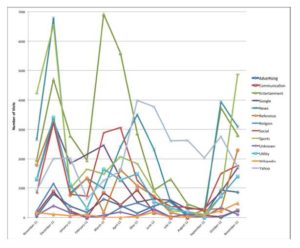
Figure 2 : Frequency of web usage during the one year project
Figure 2 indicates that from the beginning of the project there was high activity and during the whole project period there were some extreme peaks. There was a significant high usage of entertainment in March for example. The utility category grew in use once the participants became accustomed to the smartphone. The sport category was highly used in the beginning and then at a constant, moderate level for the entire period. News and communication varied in usage throughout the year and this was most likely due to the fluctuations in large news events that took place throughout the year. For example, in September and October 2012 the Kenyan military was in Somalia or other breaking news (locally or internationally). Another trend for high usage was when the participants received new Internet time (data bundles at the beginning of every month), which most likely increased entertainment usage in order to watch TV, videos, etc. Higher frequency of usage also coincides with the researchers’ workshops and meetings in Nairobi.
Smartphone application usage
The smartphone applications usages were divided into categories and Figure 3 shows the categories and frequency for the whole year.
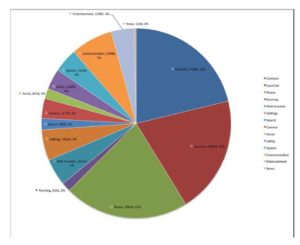
Figure 3 : Categories of application usage distribution
Phone, launcher and contacts were nearly 2/3 of the total usage, which was in total 346,832 applications’ usages during the project period. There was an intensive use of communication (25000 times), which primarily consisted of email, multimedia and text messages, and Bluetooth file transfers for the exchange of images and music. The smartphones native applications were frequently used such as camera (11774 times) and digital calendar, calculator, file manager, clock, and maps (utility). There was notably high activity in the category “system” (14203 times), which consisted of different applications connected to the operating system of the smartphone. Moreover, applications for running (5534 times) were frequent.
Figure 4 shows application usage frequency per month.
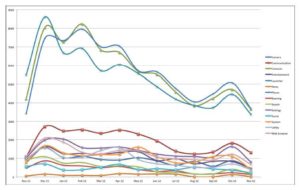
Figure 4 : Frequency of application usage during the one year project
The application usage corresponds with web usage frequency with high activity initially. Moreover, contacts, phone and utility have a high frequency when the participants received new scratch cards and data bundles. Even here, the usage of news and social communication showed higher frequency when significant events took place in their surroundings. In general, there was a constant and high usage of applications over time. Accordingly, there was high frequent usage during the whole period of applications for running. However, the frequency of usage for running applications was most likely affected by weather, especially during the rainy season, due to the frailty of smartphones.
Discussion
The detailed analysis of mobile practice in everyday life revealed impacts across many aspects of life. Although, smartphones were a novelty to the Kenyan runners, they brought new activities to the participants’ daily lives. Participants in this study used smartphones actively and in various ways. Koole (2009) highlighted in the FRAME-model the intersection between mobile technology, the learner and social aspects. Using this perspective, five main themes emerged from the findings of the Kenyan runners’ usage:
– learning for curiosity,
– learning for professional development,
– learning about technology,
– learning about the society including understanding of their own and others’ cultures, and social networking, collaboration and entertainment.
Findings showed how the runners quickly adopted smartphones and how they created an important tool for information seeking, social collaboration and learning. Undoubtedly, the participants filled time with what they found most interesting and useful to their personal needs. Hence, these findings correlate to Koole’s (2009) FRAME model and showed the integration of device usability, interaction learning and social technology. Firstly, learning was a personal process through the use of the web search (Google and Yahoo), category “reference”, Wikipedia and suitable smartphone applications. From day one the frequency for web search engines Google and Yahoo was high and continuous throughout the year.
Secondly, obviously sport was interesting for the Kenyan runners and web usage emerged from that particular personal interest. Consequently, the runners had use of smartphones by searching on the web for training programs, health aids, diet advice, races, race managers, etc. The runners own development within their work (running) was challenged and the runners created something interesting for themselves from the available resources. Thus, the smartphone was embedded in the existing practice by usage of applications for running (such as Runkeeper, Mytracks, etc.) in their daily training. Hence, smartphones were seen as an appropriate tool for work and learning.
Thirdly, the tool was constantly used and the participants continuously explored the smartphone, its applications and searched for new applications. The participants shared data and used for example Dropbox. Thus, there was an ongoing learning about the technology not least showed by the high usage of the category “utility”. The utility category, in general, showed that the runners were willing to experiment and improve their smartphones. This category even exemplified the diversity of the runners’ usage of smartphones. In the utility category for web applications, the runners installed new web browsers, software for photo processing from Adobe, and frequented the portals of Safaricom and Vodafone for tools and tips. In the utility category for applications, the runners used the maps, calculator, clock, calendar, notepad and Play store applications frequently. In short, the runners’ usage of utilitarian applications and websites was diverse and immersed.
Fourthly, the Kenyan runners’ interest for society and culture grew. The runners had limited formal education, but showed a high interest for searching for information. To develop their minds, the participants searched on the web for education material, information about facts (i.e. Wikipedia), reading novels or information about famous persons, institutions, politics, historical sites, events, etc. (category “Google”, “Yahoo” and “reference”). Watching news and reading local and international news was consistently high throughout the period. There were peaks in frequency due to breaking news, which could be local, national or international. The peaks correlated with the categories of “social”, “communication” and web searches, which were most likely important ways for them to spread knowledge about current events. Additionally, there were peaks for watching TV, videos and news in April/May and September/October. These peaks most likely occurred because these were the months for international marathon races. This also correlated to high usage within the category “social”, which indicated increased communication and sharing of information. It was then possible to claim that the Internet replaced TV and radio as their main source of information.
Fifthly, as in previous studies, the interest for entertainment was high. Music, games, adult sites, watching videos, TV, and YouTube dominated this category. Thus, of key importance for the participants was access to the Internet. Moreover, access to the Internet opened Pandora’s Box, and some of the participants showed a high frequency of visits to adult web sites. However, much of the usage within the entertainment category emerged from the runners’ interest in athletics. For example, they frequently watched famous runners or well-known races. Moreover, the participants were a group with limited computer skills, but their digital literacy grew during the project. In a very short time, all the Kenyan runners used Facebook on a frequent basis as a main means for communication. In addition, the participants started to use Twitter, email and Skype and expanded their social network to a larger sphere.
Hence, the difference in this study compared with other studies was that usage did not stop with entertainment; it continued into other areas. The participants demonstrated an active, flexible and diverse way to learn with a digital learning resource. The smartphone acted as a “facilitator” and improved access to information and knowledge. This facilitaiton was congruent with the FRAME-model (Koole, 2009) with its focus on a mobile device, the learner and social aspects. There was visible evidence that the device impacted the runners’ social lives and learning, and enhanced opportunities to improve their current life situation.
Limitations
This study has several limitations. Firstly, the general conditions for the research. The fact that the smartphones were tracked may affect the frequency and activity. However, the study lasted for one year, which could minimize such an effect. Accordingly, there was a high usage of the smartphone during the entire project time. Secondly, the frequency increased due to the monthly distribution of data bundles. This primarily affected the categories of entertainment and social networking, which were generally lower the days before new data bundles were distributed. Thirdly, frequency was higher when the researchers did participant observations and workshops in the project (five different times) thus the method affected the outcome. Fourthly, there were technical problems with the tracking, and all the phones were not tracked for the entire period. Fifthly, due to technical limitations it was not possible to explore where and when the participants used their smartphones. The reason was that the participants frequently switched off the GPS to save power.
Conclusions
This study highlights how Kenyan runners developed new activities in their daily activities by smartphone usage. Findings showed a significant example of mobile learning and interconnection between the device usability, interaction learning and social collaboration. The tool was quickly embedded in existing practices for the Kenyan runners. The participants intensively used applications in their smartphones and in total applications were used 346,832 times. Runners used smartphone applications during training and interest-driven learning navigated their search for immediate information on the web. In this one-year study, we noticed high activity usage of the web and 180,000 unique web sites were logged. In particular, there was a high usage frequency of web browsing, entertainment, sports and social media. Thus, the sociocultural analysis indicated that the combination of smartphones and Internet access provided enhanced learning, communication, collaboration and widened the participants’ social world. Additionally, it was notable that the runners, who came from poor backgrounds and generally had limited education, showed enhanced interest for local and international news and information updates. Hence, the digital resource was considered to be an appropriate tool for learning, training and social interactions. Thus, smartphones and Internet access may act as important tools for poor people in developing countries to improve learning, awareness of current events, increased social network and collaborative opportunities.
References
1. Balasubramanian, K., Thamizoli, P., Umar, A., Kanwar, A., 2010. Using Mobile Phones to Promote Lifelong Learning among Rural Women in Southern India. Distance Educ. 31, 193—209.
Publisher – Googlescholar
2. Bowen, H., 2010. Information at the Grassroots: Analyzing the Media Use and Communication Habits of Kenyans to Support Effective Development, Africa Development Research Series: Kenya.
3. Communications Commission of Kenya, 2016. Quarterly sector statistics report. Communications Commission of Kenya.
4. Horst, H., Miller, D., 2005. From kinship to link-up – Cell phones and social networking in Jamaica. CURR Anthr. 46, 755—778.
Publisher – Googlescholar
5. Jensen, M., 2012. Fundamental Access Issues, in: Sadowsky, G. (Ed.), Accelerating Development Using the Web: Empowering Poor and Marginalized Populations. World Wide Web Foundation and Rockefeller Foundation, San Francisco, pp. 25—46.
6. Jones, A.C., Issroff, K., Scanlon, E., 2006. Affective factors in learning with mobile devices, Big issues in mobile learning. University of Nottingham.
7. Kearney, M., Schuck, S., Burden, K., Aubusson, P., 2012. Viewing Mobile Learning from a Pedagogical Perspective. Res. Learn. Technol. 20.
Publisher – Googlescholar
8. Kenny, R.F., Van Neste-Kenny, J.M.C., Park, C.L., Burton, P.A., Meiers, J., 2009. Mobile Learning in Nursing Practice Education: Applying Koole’s FRAME Model. J. Distance Educ. 23, 75—96.
Googlescholar
9. Koole, M.L., 2009. A model for framing mobile learning, in: Ally, M. (Ed.), Mobile Learning: Transforming the Delivery of Education and Training. AU Press, Athabasca University, pp. 25—47.
Googlescholar
10. Looi, C.-K., Seow, P., Zhang, B., So, H.-J., Chen, W., Wong, L.-H., 2010. Leveraging mobile technology for sustainable seamless learning: a research agenda. Br. J. Educ. Technol. 41, 154—169. doi:10.1111/j.1467-8535.2008.00912.x
Publisher – Googlescholar
11. Merchant, G., 2012. Mobile practices in everyday life: Popular digital technologies and schooling revisited. Br. J. Educ. Technol. 43, 770—782. doi:10.1111/j.1467-8535.2012.01352.x
Publisher – Googlescholar
12. Rangaswamy, N., Cutrell, E., 2012. Anthropology, development and ICTs: slums, youth and the mobile internet in urban India, in: ICTD ’12. ACM, New York, NY, USA, pp. 85—93. doi:10.1145/2160673.2160685
Publisher – Googlescholar
13. Shariffudin, R.S., Guan, C.H.J., Dayang, T., Mislan, N., Lee, M.F., 2012. Mobile Learning Environments for Diverse Learners in Higher Education. Int. J. Future Comput. Commun. 32—35. doi:10.7763/IJFCC.2012.V1.10
Publisher– Googlescholar
14. Shrum, W., Mbatia, P.N., Palackal, A., Dzorgbo, D.-B.S., Duque, R.B., Ynalvez, M.A., 2011. Mobile phones and core network growth in Kenya: Strengthening weak ties. Soc. Sci. Res. 40, 614—625. doi:10.1016/j.ssresearch.2010.09.015
Publisher – Googlescholar
15. Simonson, L., Bushaw, V., 1993. Participatory action research: Easier said than done. Am. Sociol. 24, 27—37. doi:10.1007/BF02691943
Publisher – Googlescholar
16. Traxler, J., 2009. Current state of mobile learning., in: Ally, M. (Ed.), Mobile Learning Transforming the Delivery of Education and Training. AU Press, Edmonton, pp. 9—24.
Googlescholar
17. UNDP, 2014. Human Development Report 2014. United Nations Development Programme, New York, NY.
18. Whyte, W.F., 1991. Participatory action research. Through practice to science in social research., in: Participatory Action Research. Sage Publications, Inc., Thousand Oaks, CA, pp. 20—56.
Googlescholar




